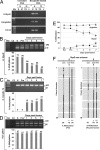Active tissue-specific DNA demethylation conferred by somatic cell nuclei in stable heterokaryons
- PMID: 17360535
- PMCID: PMC1838613
- DOI: 10.1073/pnas.0700181104
Active tissue-specific DNA demethylation conferred by somatic cell nuclei in stable heterokaryons
Abstract
DNA methylation is among the most stable epigenetic marks, ensuring tissue-specific gene expression in a heritable manner throughout development. Here we report that differentiated mesodermal somatic cells can confer tissue-specific changes in DNA methylation on epidermal progenitor cells after fusion in stable multinucleate heterokaryons. Myogenic factors alter regulatory regions of genes in keratinocyte cell nuclei, demethylating and activating a muscle-specific gene and methylating and silencing a keratinocyte-specific gene. Because these changes occur in the absence of DNA replication or cell division, they are mediated by an active mechanism. Thus, the capacity to transfer epigenetic changes to other nuclei is not limited to embryonic stem cells and oocytes but is also a property of highly specialized mammalian somatic cells. These results suggest the possibility of directing the reprogramming of readily available postnatal human progenitor cells toward specific tissue cell types.
Conflict of interest statement
The authors declare no conflict of interest.
Figures




References
Publication types
MeSH terms
Substances
Grants and funding
LinkOut - more resources
Full Text Sources
Other Literature Sources

